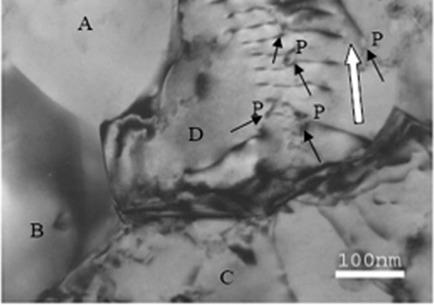当前位置:
X-MOL 学术
›
Adv. Eng. Mater.
›
论文详情
Our official English website, www.x-mol.net, welcomes your
feedback! (Note: you will need to create a separate account there.)
Creep and Superplasticity: Evolution and Rationalization
Advanced Engineering Materials ( IF 3.4 ) Pub Date : 2020-01-07 , DOI: 10.1002/adem.201900532 Farghalli A. Mohamed 1
Advanced Engineering Materials ( IF 3.4 ) Pub Date : 2020-01-07 , DOI: 10.1002/adem.201900532 Farghalli A. Mohamed 1
Affiliation

|
Detailed studies on the creep behavior of materials are of scientific and practical significance. From a scientific point of view, data obtained from such studies are critical to the characterization of creep behavior in terms of deformation mechanisms. From a practical point of view, information inferred from such studies is useful because of its relevance to many design considerations. Over the past several decades, much progress has been made in rationalizing the creep behavior of metals and solid‐solution alloys. Such progress is extended to understanding the creep behavior of new classes of materials such as powder metallurgy (PM) Al alloys, discontinuous SiC composites, superplastic alloys, and high‐entropy alloys (HEAs). Progress in micrograin superplasticity (1 μm < d < 10 μm, where d is the grain size) has been applied to the emergence of high strain rate (HSR) superplasticity using ultrafine‐grained alloys (0.3 μm < d < 1 μm). The concept of creep is utilized to develop a deformation mechanism for nanocrystalline (nc) materials (d < 100 nm). Using the details of this mechanism, it is possible (1) to explain why the behavior of nc material is not superplastic and 2) to predict a transition from superplastic behavior to nc behavior.
中文翻译:

蠕变和超塑性:演变和合理化
对材料蠕变行为的详细研究具有科学和实践意义。从科学的角度来看,从这些研究中获得的数据对于表征蠕变行为的变形机理至关重要。从实际的角度来看,从此类研究中推断出的信息是有用的,因为它与许多设计考虑因素相关。在过去的几十年中,在合理化金属和固溶合金的蠕变行为方面已取得了很大进展。这些进展已扩展到理解新型材料的蠕变行为,例如粉末冶金(PM)铝合金,不连续SiC复合材料,超塑性合金和高熵合金(HEA)。微粒超塑性的进展(1μm< d <10μm,其中d是使用超细晶粒合金(0.3μm< d <1μm)产生高应变率(HSR)超塑性的结果。利用蠕变的概念来开发纳米晶体(nc)材料(d <100 nm)的变形机制。使用此机制的详细信息,可以(1)解释为什么nc材料的行为不是超塑性的,以及2)预测从超塑性行为到nc行为的转变。
更新日期:2020-01-07
中文翻译:

蠕变和超塑性:演变和合理化
对材料蠕变行为的详细研究具有科学和实践意义。从科学的角度来看,从这些研究中获得的数据对于表征蠕变行为的变形机理至关重要。从实际的角度来看,从此类研究中推断出的信息是有用的,因为它与许多设计考虑因素相关。在过去的几十年中,在合理化金属和固溶合金的蠕变行为方面已取得了很大进展。这些进展已扩展到理解新型材料的蠕变行为,例如粉末冶金(PM)铝合金,不连续SiC复合材料,超塑性合金和高熵合金(HEA)。微粒超塑性的进展(1μm< d <10μm,其中d是使用超细晶粒合金(0.3μm< d <1μm)产生高应变率(HSR)超塑性的结果。利用蠕变的概念来开发纳米晶体(nc)材料(d <100 nm)的变形机制。使用此机制的详细信息,可以(1)解释为什么nc材料的行为不是超塑性的,以及2)预测从超塑性行为到nc行为的转变。











































 京公网安备 11010802027423号
京公网安备 11010802027423号